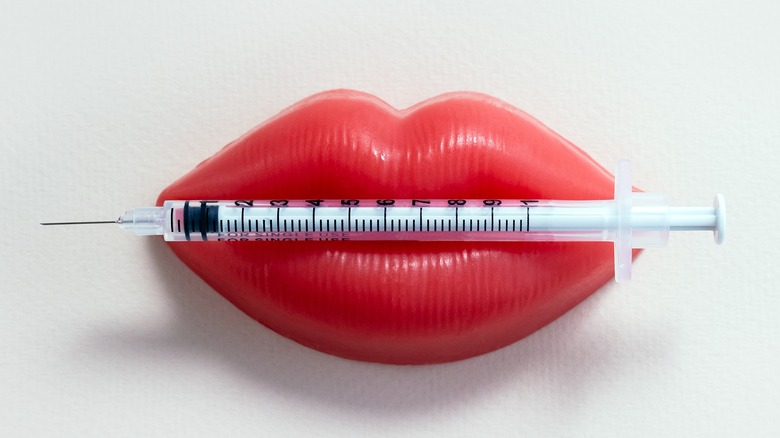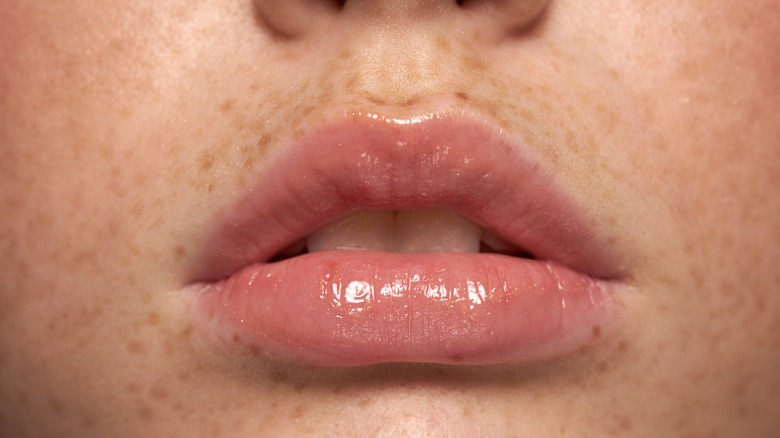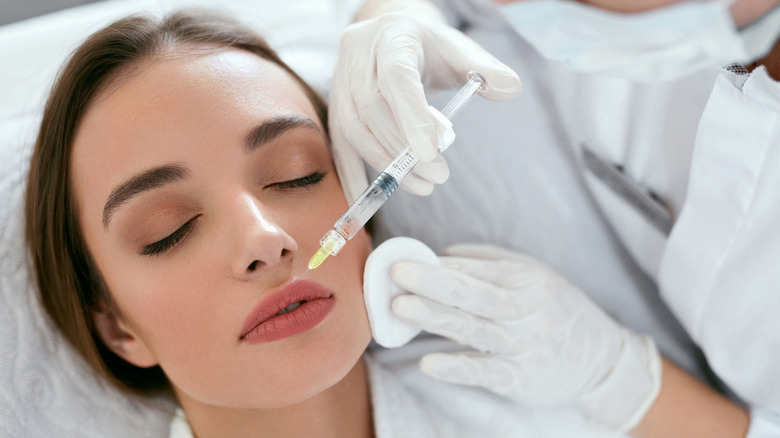Can You Prevent Lip Filler Migration?
Lip fillers have been a popular procedure as a fuller lip and a variety of lip products have become the trend, especially following Kylie Jenner's transformation. According to a study published in the Archives of Plastic Surgery in 2019, the surgical procedure known as lip augmentation has increased by 5% since 2016 and 60% since 2000. Soft tissue fillers in general have increased by 312% since 2000. But getting lip fillers doesn't come without some side effects, even if rare.
Lip fillers are usually done to add more volume to the lips to make them bigger than their natural size. This gives the lips a fuller, plump look. Today, the most common lip filler is one made with synthetic hyaluronic acid. Because of the liquid and gel-like material of filler, it may cause it to move, or migrate, around its general area. This is known as lip filler migration, but is it preventable?
What is lip filler migration?
After a lip filler procedure, the filler itself can spread out to a different location instead of remaining completely in the lips. It's not hard for lip filler migration to go unnoticed because it has an obvious appearance. This side effect will appear through a puffy upper lip with no defined distinction between the lip's edge and the skin above it. This can also happen below the bottom lip. A popular comparison is that of "duck lips" or a "filler mustache" with an exaggerated pout. It can also appear through lumps in the area. Some professionals say that lip filler migration is a rare occurrence, but it is usually caused by incorrect administration during the injection. Too much filler can also result in lip filler migration because the area can only hold so much (via Youth Haus).
This migration effect lasts about six to 18 months during which your body will metabolize and break it down if left alone during that timespan. "It is not something I see often, but it can happen," Dr. Rebecca Marcus, M.D., a board-certified dermatologist and the founder of Maei MD, tells Shape. Fortunately, there are ways to treat it if it happens, but there are also some steps you can take to help prevent it from happening, too.
How to prevent lip filler migration
The most important thing you can do to avoid lip filler migration is to choose a knowledgeable and experienced provider. When searching for someone, it is important to take your time to find the right person to do the job, especially in a saturated market. Look for someone who is licensed, medically trained, and uses reputable lip filler brands. Ideally, they should also be using reversible and dissolvable fillers to better work with in the future if necessary. After receiving lip filler, it is incredibly important for you to do aftercare. Doing it safely and properly and giving it the appropriate amount of time to heal can also aid in avoiding lip filler migration (via L1P Aesthetics).
If it has already occurred, it might be better to take action right away rather than wait for it to dissolve on its own because that could take a long time. "Whenever I see filler migration, I recommend hyaluronidase," facial plastic surgeon Dr. Kay Durairaj, M.D., tells Shape. "People think that they should wait until the filler dissolves and in reality, it takes an extremely long time. It can take two to three years and beyond. I also don't like the idea of injecting good filler on top of bad filler placement because it's hard to camouflage and truly just draws more water into the problem migration area."
This treatment uses an enzyme called hyaluronidase that helps dissolve the migrated filler faster. This enzyme actually occurs in your body naturally, and it is what is responsible for dissolving filler when it doesn't migrate to the wrong spot. Dissolving the old filler is a better approach before trying again (via L1P Aesthetics).


